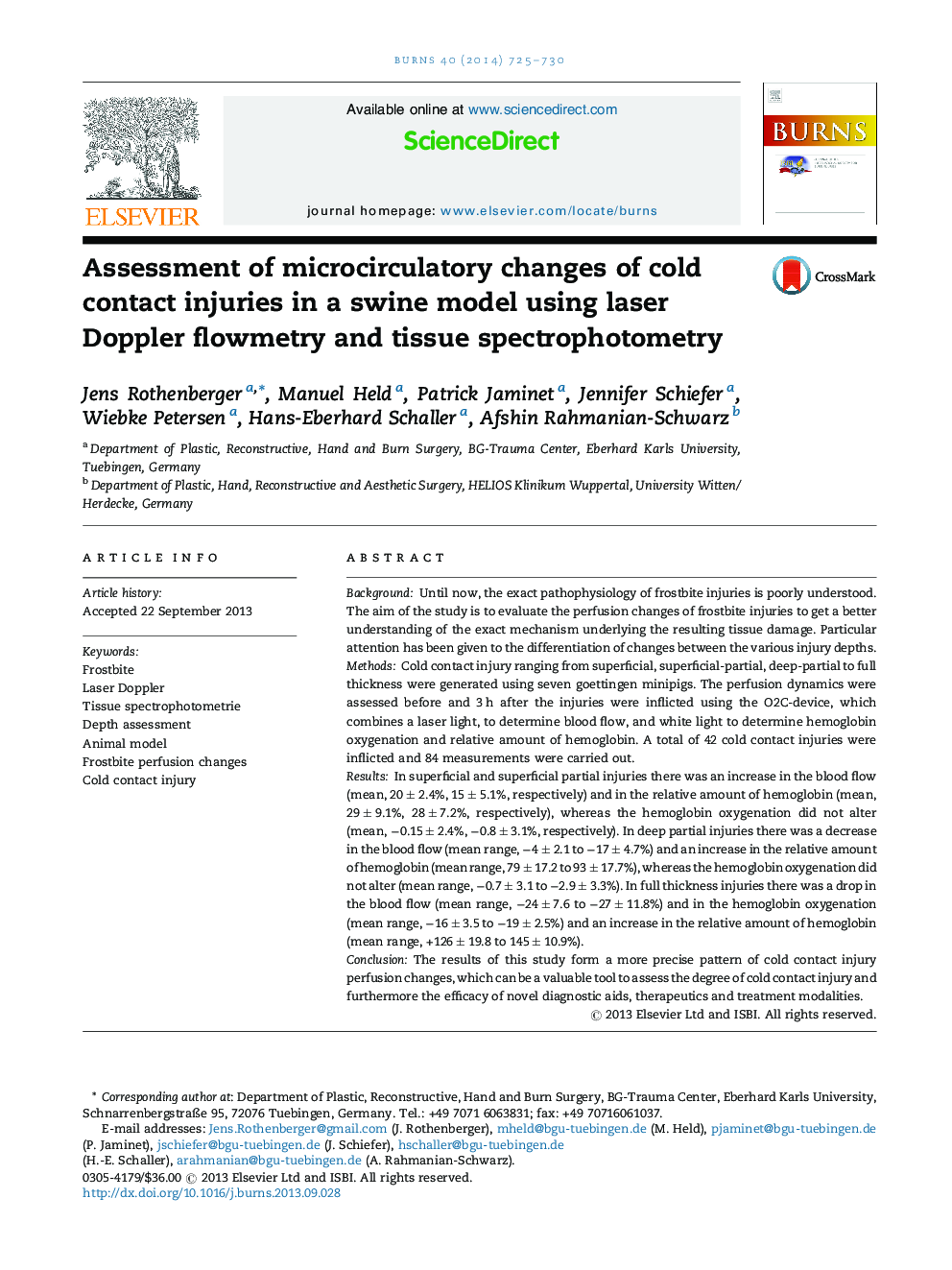| کد مقاله | کد نشریه | سال انتشار | مقاله انگلیسی | نسخه تمام متن |
|---|---|---|---|---|
| 3104501 | 1191652 | 2014 | 6 صفحه PDF | دانلود رایگان |
BackgroundUntil now, the exact pathophysiology of frostbite injuries is poorly understood. The aim of the study is to evaluate the perfusion changes of frostbite injuries to get a better understanding of the exact mechanism underlying the resulting tissue damage. Particular attention has been given to the differentiation of changes between the various injury depths.MethodsCold contact injury ranging from superficial, superficial-partial, deep-partial to full thickness were generated using seven goettingen minipigs. The perfusion dynamics were assessed before and 3 h after the injuries were inflicted using the O2C-device, which combines a laser light, to determine blood flow, and white light to determine hemoglobin oxygenation and relative amount of hemoglobin. A total of 42 cold contact injuries were inflicted and 84 measurements were carried out.ResultsIn superficial and superficial partial injuries there was an increase in the blood flow (mean, 20 ± 2.4%, 15 ± 5.1%, respectively) and in the relative amount of hemoglobin (mean, 29 ± 9.1%, 28 ± 7.2%, respectively), whereas the hemoglobin oxygenation did not alter (mean, −0.15 ± 2.4%, −0.8 ± 3.1%, respectively). In deep partial injuries there was a decrease in the blood flow (mean range, −4 ± 2.1 to −17 ± 4.7%) and an increase in the relative amount of hemoglobin (mean range, 79 ± 17.2 to 93 ± 17.7%), whereas the hemoglobin oxygenation did not alter (mean range, −0.7 ± 3.1 to −2.9 ± 3.3%). In full thickness injuries there was a drop in the blood flow (mean range, −24 ± 7.6 to −27 ± 11.8%) and in the hemoglobin oxygenation (mean range, −16 ± 3.5 to −19 ± 2.5%) and an increase in the relative amount of hemoglobin (mean range, +126 ± 19.8 to 145 ± 10.9%).ConclusionThe results of this study form a more precise pattern of cold contact injury perfusion changes, which can be a valuable tool to assess the degree of cold contact injury and furthermore the efficacy of novel diagnostic aids, therapeutics and treatment modalities.
Journal: Burns - Volume 40, Issue 4, June 2014, Pages 725–730
